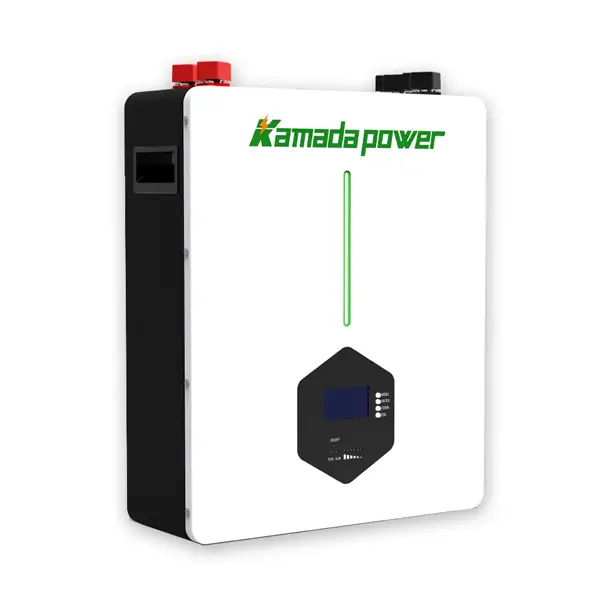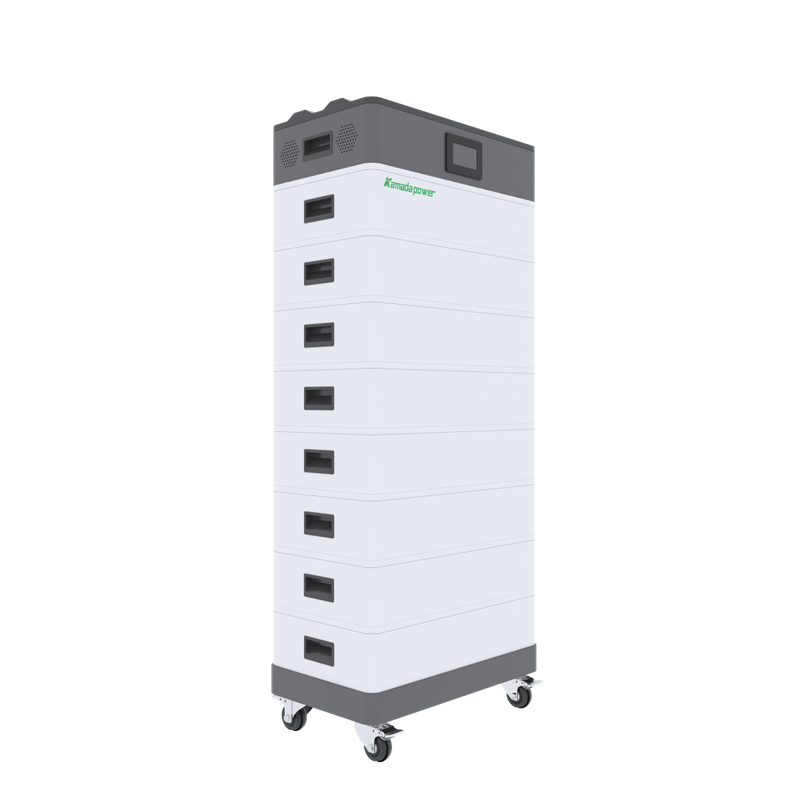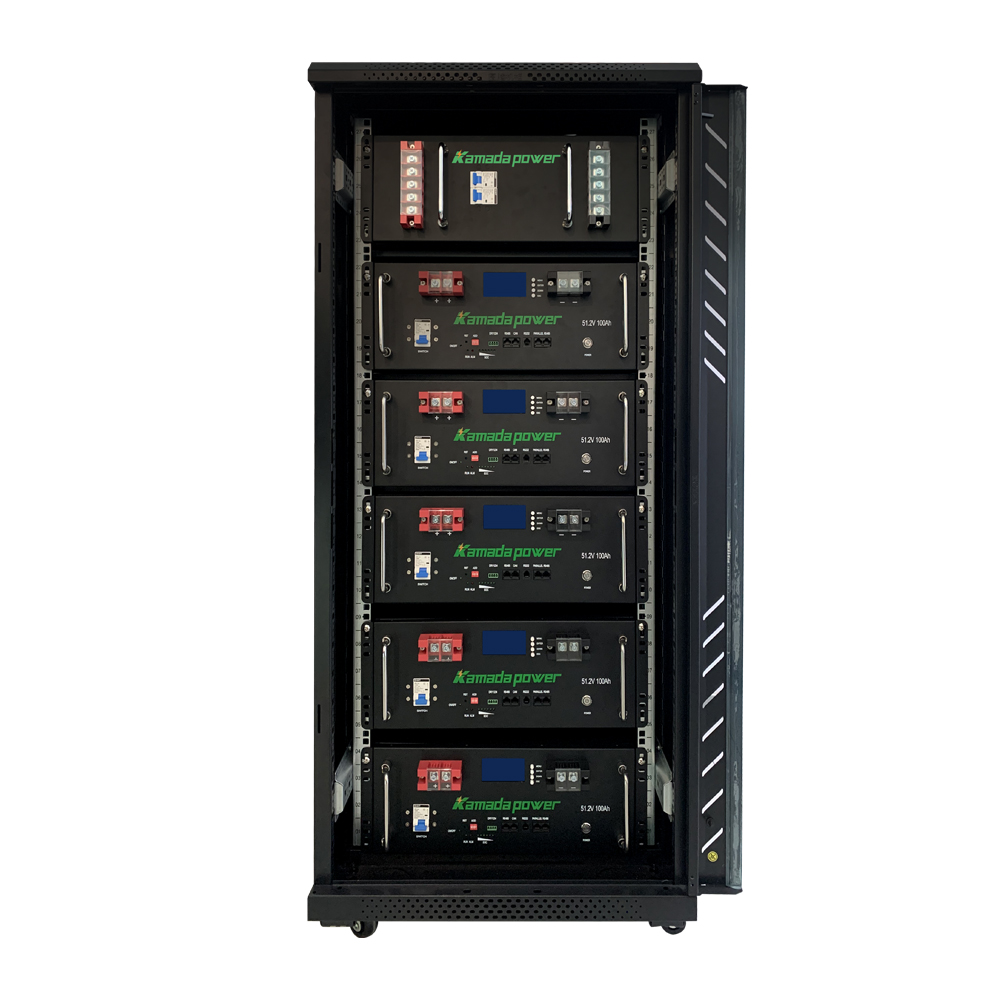Ce înseamnă AWG? Diagrama diametrului și AMP pentru sistemele de baterii. Ați specificat un sistem de baterii de top, dar performanța este slabă, iar invertorul se declanșează mereu. Ce se întâmplă? De nouă ori din zece ori, vinovatul este cea mai neglijată componentă: cablul bateriei în sine.
Utilizarea dimensiunii greșite a cablurilor este o rețetă pentru dezastru. Nu pierdeți doar eficiență din cauza căderii de tensiune, ci creați și un risc serios de incendiu din cauza supraîncălzirii. Am văzut proiecte de milioane de dolari aproape deraiate de cupru ieftin, subdimensionat. Acest ghid va demistifica American Wire Gauge (AWG), oferind metodele esențiale de dimensionare a cablurilor pentru performanțe și siguranță maxime.

Kamada Power 51.2v 200Ah 10kWh Baterie Powerwall

Baterie stivuibilă de înaltă tensiune 20kWh 400V

Baterie pentru rafturi de servere 20kWh
Ce înseamnă AWG?
La baza sa, AWG vine de la American Wire Gauge. Este sistemul standard utilizat de toată lumea în America de Nord pentru măsurarea diametrului unui fir solid, rotund, conductor de electricitate.
Principalul lucru pe care trebuie să îl rețineți este relația inversă, care pare un pic înapoiată la început: cu cât numărul AWG este mai mic, cu atât firul este mai gros.
Gândiți-vă la asta ca la un scor de golf - un număr mai mic este mai bun. Acest lucru explică de ce un fir de 4 AWG este mult mai subțire decât un cablu masiv de 4/0 (se pronunță "four-aught") AWG utilizat pentru conectarea grupurilor mari de baterii. Înțelegerea acestei reguli contraintuitive este primul și cel mai important pas.
Acest standard nu a apărut de nicăieri, desigur. Acesta a fost creat de compania Brown & Sharpe în secolul al XIX-lea. Astăzi, este standardizat de ASTM (Societatea Americană pentru Testare și Materiale), motiv pentru care un inginer din Texas poate specifica un cablu de 2 AWG și să știe că acesta va corespunde specificațiilor unei componente construite în Germania.
Diametrul AWG și ampacitatea (AMP) Grafic de masterat
În regulă, să trecem la partea practică a lucrurilor. Înțelegerea acestor diagrame este ceea ce separă o instalare bună de una excelentă.
AWG în Diagrama de conversie a diametrului
În primul rând, este util să vizualizați cât de diferite sunt aceste manometre. Iată o referință rapidă pentru dimensiunile comune cu care veți avea de-a face în sistemele de baterii.
| Dimensiune AWG | Diametru (inci) | Diametru (mm) |
|---|
| 4/0 | 0.460″ | 11,68 mm |
| 3/0 | 0.410″ | 10.40 mm |
| 2/0 | 0.365″ | 9,27 mm |
| 1/0 | 0.325″ | 8,25 mm |
| 2 | 0.258″ | 6,54 mm |
| 4 | 0.204″ | 5,19 mm |
| 6 | 0.162″ | 4.11 mm |
| 8 | 0.128″ | 3,26 mm |
Conceptul critic: Ampacitate vs. cădere de tensiune
Acesta este punctul în care vedem o mulțime de confuzii, chiar și la profesioniștii cu experiență. Dimensionarea corectă a unui fir este de fapt un act de echilibrare între doi factori cheie: Ampacitate și Cădere de tensiune.
Ampacitate este numărul de siguranță. Gândiți-vă la el ca la curentul maxim absolut pe care îl poate suporta un fir înainte ca izolația să înceapă să se topească și să devină un risc de incendiu. Codul electric național (NEC) stabilește aceste valori și acestea nu sunt negociabile.
Cădere de tensiunecu toate acestea, este vorba despre performanță. Fiecare metru de fir are rezistență. Pe măsură ce curentul trece prin el, se pierde un pic de tensiune. Într-un sistem de 230 V CA, cui îi pasă de pierderea unui volt sau doi? Dar într-un sistem de baterii de 48V DC, aceeași cădere de 2 volți înseamnă o pierdere masivă de 4% din putere înainte ca aceasta să ajungă la sarcină. Aceasta este o mare problemă.
În experiența noastră, căderea de tensiune este aproape întotdeauna factorul care dictează dimensiunea firului în sistemele de curent continuu de joasă tensiune. Invertorul, controlerul motorului, toate aceste echipamente scumpe au o tensiune minimă pe care trebuie să o vadă. Dacă tensiunea scade prea mult deoarece cablurile dvs. sunt prea lungi sau prea subțiri, echipamentul va avea performanțe scăzute sau se va opri.
Diagrama de referință rapidă AWG Ampacity
Acest grafic vă oferă ratingurile de siguranță despre care tocmai am vorbit. Dar nu uitați, acesta este maximul pentru siguranță, nu optimul pentru eficiență.
| Dimensiune AWG | Secțiune transversală (mm²) | Ampacitate (Amperi)* |
|---|
| 4/0 | 107 | 380 A |
| 2/0 | 67.4 | 283 A |
| 1/0 | 53.5 | 245 A |
| 2 | 33.6 | 170 A |
| 4 | 21.2 | 128 A |
| 6 | 13.3 | 80 A |
| 8 | 8.37 | 55 A |
Bazat pe un fir de cupru cu temperatura nominală de 90°C în aer liber, conform tabelului NEC 310.16. Acesta este un punct de referință comun, dar trebuie să verificați întotdeauna codurile locale și specificul aplicației.
Cablare pentru sisteme de baterii DC de joasă tensiune
Client Spotlight: Energia solară și stocarea energiei
Să facem acest lucru real. Un scenariu comun cu care ne confruntăm este conectarea unei bănci de baterii LiFePO4 de 48V la un invertor de 5.000 de wați pentru o Sistem comercial de stocare a energiei (ESS). Să presupunem că traseul cablului este de 3 metri într-un singur sens.
Primul lucru pe care îl faceți este să găsiți curentul: Curent (I) = Putere (P) / Tensiune (V). Pentru această configurație, 5000W / 48V vă dă aproximativ 104 Amperi.
Acum, vă uitați la graficul ampatamentului. Un fir de 6 AWG suportă 80A (nu este suficient), iar unul de 4 AWG suportă 128A (arată bine). Așa că alegeți 4 AWG, nu? Nu atât de repede. Trebuie să verificați căderea de tensiune. Pe 10 picioare, un cablu de 4 AWG la 104A vă oferă o cădere de tensiune de aproximativ 0,21V, sau 0,44%. Este excelent. Dar ce se întâmplă dacă cablul are o lungime de 25 de picioare? Acum căderea este de peste 1%, iar performanța ar putea începe să aibă de suferit. Dacă ați fi încercat să vă descurcați cu 6 AWG, căderea ar fi fost îngrozitoare și cablul s-ar fi încins periculos. Acesta este compromisul: un cablu mai gros, cum ar fi 2/0 AWG, costă mai mult la început, desigur, dar este polița dumneavoastră de asigurare pentru a obține performanța și siguranța pe care le așteptați.
Importanța eșuării
Pentru cablurile bateriei, ar trebui să utilizați sârmă împletită, nu nucleu solid. Sfârșitul poveștii. Cele două motive principale sunt flexibilitatea și durabilitatea. Cablurile torsadate, în special cele foarte flexibile din clasa K, pot suporta vibrațiile constante pe care le întâlnești la elevatoarele industriale, baterie marină sisteme, orice - fără să se rupă. De asemenea, este mult mai ușor să lucrați cu el în locuri strâmte.
Standard alternativ: Conversia metrică mm²
Aveți de-a face cu echipamente europene? Probabil că veți vedea dimensiunile firelor în milimetri pătrați (mm²). Nu există o conversie perfectă, dar iată câteva echivalențe apropiate de care trebuie să țineți cont:
- 1/0 AWG ≈ 50 mm² (tehnic 53,5)
- 2 AWG ≈ 35 mm² (tehnic 33.6)
- 4 AWG ≈ 25 mm² (tehnic 21.2)
- 6 AWG ≈ 16 mm² (tehnic 13.3)
Siguranța înainte de toate: Calculul de dimensionare în 3 pași al expertului în baterii
În caz de îndoială, acesta este procesul în trei pași pe care îl folosim la nivel intern.
Pasul 1: Determinarea curentului continuu maxim
Nu puteți dimensiona pentru sarcina de vârf. Pentru orice sarcină continuă (NEC numește astfel orice lucru care funcționează timp de 3 ore sau mai mult), aveți nevoie de un tampon de siguranță. Regula 125% este standardul profesional. Ampacitate necesară = Max Amperi continui x 1,25
Folosind invertorul nostru de 104 A: 104 A x 1,25 = 130 A. Concluzia este că avem nevoie de un cablu cu o capacitate nominală de cel puțin 130A, ceea ce înseamnă că nu mai avem nevoie de 4 AWG și că trebuie să folosim 2 AWG sau mai mult.
Pasul 2: Calculați căderea de tensiune
Pentru orice sistem de curent continuu critic, doriți să mențineți căderea de tensiune sub 3%. Utilizați un calculator online al căderilor de tensiune. Veți introduce tensiunea, amperajul de la pasul 1 și distanța rotundă a cablului. Calculatorul va furniza AWG-ul minim pentru a vă atinge obiectivul. Alegerea finală este firul cel mai gros de la pasul 1 sau pasul 2.
Pasul 3: Verificare pentru reducerea mediului
Instalați mai multe cabluri împreună într-o singură conductă? Sistemul se află într-un mediu cald, în mod constant peste 86°F (30°C)? Ambele aceste lucruri înseamnă mai multă căldură, ceea ce reduce ampacitatea reală a unui cablu. În aceste cazuri, trebuie să "reduceți" cablul - ceea ce este doar un mod elegant de a spune că trebuie să treceți la următorul calibru mai gros pentru a fi în siguranță.
Concluzie
În concluzie: cablajul vă menține sistemul unit. Pentru baterii de joasă tensiune, dimensionarea pentru căderea de tensiune este la fel de critică ca și dimensionarea pentru ampatament-așa veți obține performanța maximă pentru care ați plătit. Întotdeauna fuzionați corect sistemul, deoarece fiecare detaliu contează.
Această gândire la nivel de sistem se află la baza activității noastre. Dacă proiectul dvs. necesită mai mult decât o baterie de pe raft, echipa noastră este specializată în crearea soluții personalizate pentru baterii. Noi concepem pachete adaptate la nevoile dvs. exacte de tensiune, curent și performanță, asigurându-ne că fiecare componentă funcționează în armonie perfectă. Contactați-ne pentru a vă proiecta soluția de alimentare, chiar de la început.
ÎNTREBĂRI FRECVENTE
1. De ce sârmă AWG am nevoie pentru un sistem de baterii de 200 amperi?
Pentru 200 de amperi, începeți în zona 2/0 sau 3/0 AWG. Răspunsul corect depinde într-adevăr de tensiune și de distanță. O sarcină de 200 A într-un sistem de 12 V pe doar 3 metri ar necesita un cablu masiv de 4/0 pentru a menține o cădere de tensiune rezonabilă. Dar la 48V, ați putea să vă descurcați cu un cablu mai mic de 2/0 pentru aceeași distanță.
2. Pot folosi un fir mai mic dacă distanța este foarte mică?
Puteți, dar trebuie să fiți atenți. Pentru un traseu foarte scurt - ne referim la câțiva centimetri de la o bară colectoare la o siguranță - deseori puteți dimensiona firul doar pe baza capacității sale nominale. Dar tot trebuie să confirmați căderea de tensiune este acceptabilă pentru componentele dvs. și că respectați regula 125% din NEC pentru sarcini continue.
3. Ce se întâmplă dacă cablul meu de baterie este prea mic?
Vă confruntați cu două probleme principale. În primul rând, performanța scade. Scăderea de tensiune va lipsi echipamentul de energie, făcându-l să aibă performanțe scăzute sau pur și simplu să se oprească. Este un blocaj masiv. În al doilea rând, și mult mai grav, este riscul de incendiu. Toată această rezistență se transformă în căldură. Un cablu subdimensionat se poate încălzi suficient încât să topească izolația, ceea ce poate provoca un scurtcircuit. Acesta este modul în care izbucnesc incendiile.
4. Care este diferența dintre firul AWG și SAE?
Veți vedea cabluri SAE (Society of Automotive Engineers) în vehicule. Diferența cheie este modul în care sunt măsurate. Specificațiile SAE se referă doar la suprafața conductorului de cupru în sine. Standardul AWG se bazează pe diametrul total al firului. Ceea ce înseamnă pentru dvs. este că, pentru același număr de calibru, un fir SAE este de obicei puțin mai mic și nu poate suporta la fel de mult curent ca omologul său AWG. Categoric nu doriți să le amestecați.